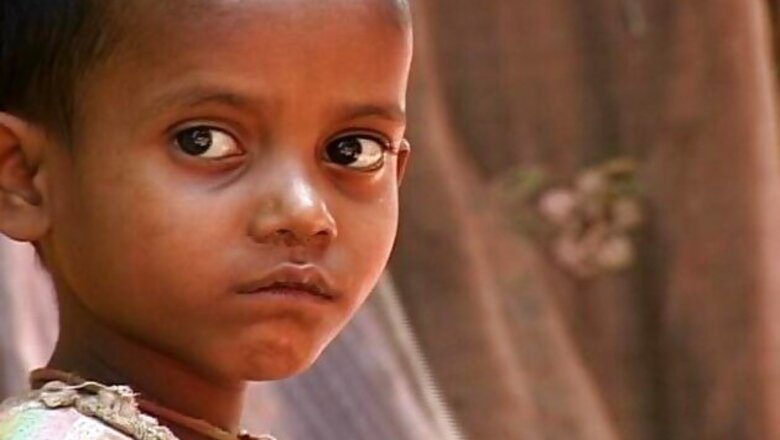
views
Despite widespread poverty in the country, India is on track to meet the United Nations' Millennium Development Goal (MDG) of poverty reduction by 2015, a UN report said on Friday. "...although poverty remains widespread in India, progress has been substantial. In India, the poverty rate fell from 49 per cent in 1994 to 42 per cent in 2005 and to 33 per cent in 2010. If the current pace continues, India will meet the poverty reduction target by 2015," UN Secretary-General's Millennium Development Goals report released by UN Information Centre said in Delhi.
The report said extreme poverty rates have been halved for Eastern Asia, South-Eastern Asia and Southern Asia, five years ahead of the deadline, though with the exception of India. "Of the 21 global targets linked to the eight goals, six of the most important have already been met or nearly so. Probably the most impressive of these is the 50 per cent reduction in the proportion of people living in extreme poverty globally," Lise Grande, UN Resident Coordinator said. The UN Millennium Summit in 2000 had agreed upon achieving eight goals with sub-targets covering poverty, hunger, health, gender equality, education and environmental indicators by 2015.
The report found that South-Eastern Asia reached hunger reduction target ahead of 2015 deadline. However, Southern Asia is lagging behind. "Eastern Asia is on track to meet the hunger target. However, in Southern Asia, the proportion of undernourished people has fallen from 26.8 per cent to 17.6 per cent during the past two decades, which is insufficient to meet the MDG target," it said. In developing regions, the percentage of people living on USD 1.25 a day or less has fallen from 47 per cent in 1990 to 22 per cent in 2010, Grande said.
"This means that 700 million fewer people are now living in conditions of extreme poverty than was the case twenty years ago. Extreme poverty rates have fallen in every region, with China leading the way," she said. On child nutrition, the report said number of underweight children in 2011 was the highest in Southern Asia among all regions with 31 per cent of children under age five, or 57 million children, underweight.( Although, eastern region reached the target of halving the proportion of undernourished children and South-Eastern
Asia is close to meeting the target.
As per the report, in Southern Asia considerable progress has been made in primary school enrolment that increased to 93 per cent from 78 per cent during 2011 and 2000. "Almost half the reduction in the global number of children out of school can be attributed to Southern Asia, where the number of such children fell from a high of 38 million in 2000 to 12 million in 2011."
It said Southern Asia saw the greatest increases in youth literacy rates between 1990 and 2011 from 60 to 81 per cent. It said the MDG drinking water target was met five years ahead of schedule in the three sub-regions. In Southern Asia and South-Eastern Asia access to improved water source increased from 72 per cent to 90 per cent and 71 per cent to 89 per cent respectively during 1990 to 2011. In Eastern Asia it increased from 68 per cent to 92 per cent during this period.
Further, the report said that Eastern Asia, Southern Asia and South-Eastern Asia are the regions that recorded the highest reduction in maternal mortality ratio over the past 20 years with 69 per cent, 64 per cent and 63 per cent, respectively. "However, Southern Asia still has the second highest maternal mortality ratio among all regions, with 220 maternal deaths per 100,000 live births in 2011," it added.
Pointing towards slum dwellers, Grande said conditions have improved in the cities and metropolises of the developing world with India, China and Indonesia driving the trend. "In the last ten years, over 200 million slum dwellers have benefited from better water sources, better sanitation facilities, and better housing...India, China and Indonesia as three large countries that are driving this trend," she said.
The report further pointed out that gender based inequalities in decision making impact countries everywhere and are a key factor limiting to reach the MDG targets. "Whether in the public or private sphere, from the highest levels of government decision-making to households, women continue to be denied equal opportunity with men to participate in decisions that affect their lives" Grande said.

















Comments
0 comment